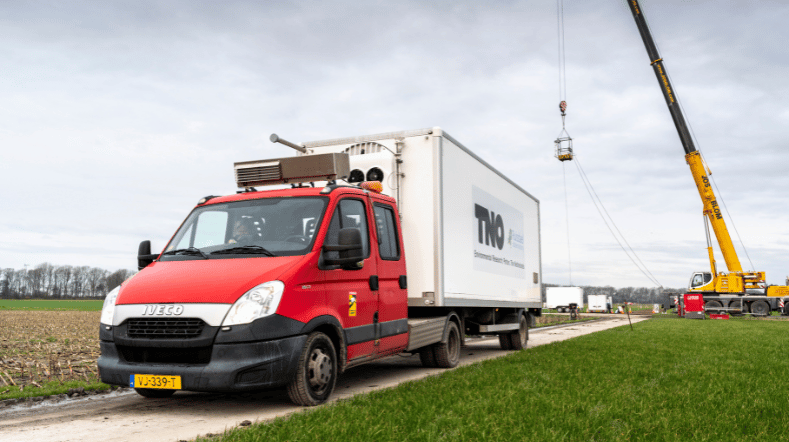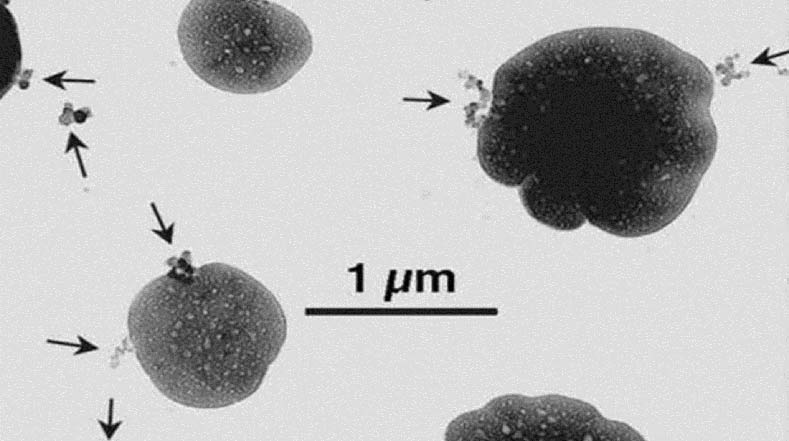
Mapping out biodiversity thanks to particulate matter filters
You might think particulate filters are only good for measuring particulate matter. But TNO researcher Henrik Cornelisson van de Ven found that these can also be used to measure ‘environmental DNA’. This led him to discover a brand-new, cost-effective technique for determining and preserving biodiversity. After a successful pilot, efforts are now being made to form a consortium to build on the research. “We could ultimately use this technique to determine what impact human activity is having on biodiversity.”
“I was reading this Canadian study about extracting the DNA of the organisms around us from air filters and then analysing them,” Van de Ven explains. “It was so incredibly fascinating, especially since we don’t actually have any reliable way to measure biodiversity yet. If it turns out that we can analyse these organisms using the existing filters, it would make a fantastic tool for determining biodiversity.”
TNO has a wealth of experience in measuring particulate matter and the effects that it has on health. Thanks to our Healthy Air Approach, we have helped airports, companies, provinces, municipalities, and more to improve air quality.
Botanic Gardens pilot in Utrecht
In late 2023, a pilot project was carried out at the Botanic Gardens in Utrecht, where the air in the tropical greenhouse was filtered for a week to see whether environmental DNA (or eDNA) from the plants there could be captured. The thinking was that if this DNA could be harnessed and analysed, it would allow a good picture to be built of the species in question. This is because analysing eDNA would help to determine taxonomic information. The samples were taken with the help of the gardens’ biologists and ecologists, and the filters were then examined by TNO and other specialist laboratories, so the DNA could be extracted and analysed.
The pilot looked at biodiversity very broadly, studying fungi, plants, insects and vertebrates. “That delivered some great results. We found 100 different species of fungi and 100 different types of plants. Not to mention 40 species of insects and 15 species of vertebrates, especially birds found in and around the greenhouse. Moreover, the DNA of a species of fish, two of which live in the pond present in the greenhouse, was also recovered. That was a surprise... I didn’t think we would find so much. I can understand picking up DNA from plants and birds, but the fact that we discovered DNA from the fish in the water and worms living in the soil did astonish me. That said, we didn’t find DNA from every living thing in the greenhouse. It will be interesting to look into it further and discover why we find the DNA in the filter for one species but not the other,” Van de Ven continues.
Biodiversity: vital for a robust ecosystem
In the past few years, biodiversity ‒ which refers to the variety of living organisms ‒ has declined dramatically across the world, driven by pollution, climate change, and changing land use. Too much nitrogen in nature is causing biodiversity to decline. Yet, biodiversity is vital for ensuring we have clean air, fresh water, good soil quality and pollinated crops: the whole basis for a robust ecosystem. In its Biodiversity Strategy for 2030, the European Union agreed that biodiversity needs to be preserved and even improved. And according to the recently adopted Nature Restoration Law, EU countries have to restore at least 30% of habitats in a poor condition by 2030, 60% by 2040 and 90% by 2050. “The question, however, is how this should be measured. Perhaps our new tool can help,” says Van de Ven.
Correlating with nitrogen deposits and the effects of policy
With a successful initial pilot now under the belt, there are plans for further research in the pipeline. The key to this is gaining more experience in measuring eDNA using particulate filters. “Using filters to measure biodiversity is highly interesting for all involved: policymakers, provinces, and municipalities, as well as forestry managers and nature conservators too,” Van de Ven believes.
“What we want to do next is use field experiments to find the correlation between biodiversity and nitrogen deposits,” adds Fred Hartendorf, Business Developer for Circular Economy and Environment at TNO. “We already have national and European infrastructure to measure particulate matter, so if we can use that to measure biodiversity too, then it will tell us something about how biodiversity develops over time. And, in turn, what effect policy is having on biodiversity. This pilot is the first step towards mapping out biodiversity, which will then form the basis for steering policy and potentially add to the nitrogen debate.”
Dierenpark Hoenderdaell: a living lab for airborne eDNA research
TNO and its partners are testing how airborne environmental DNA (eDNA) can be used to monitor biodiversity. Dierenpark Hoenderdaell is the perfect test site because all animal species there are known.
Since airborne DNA can drift over long distances, researchers combine DNA data with wind patterns and precise sampling locations. This helps them validate the method and prepare it for use in natural areas across the Netherlands.
Setting up a consortium
To take the next step and delve deeper into measuring biodiversity, we want to set up a consortium that involves eDNA and biodiversity experts and policymakers. Interested?
Get inspired
Predicting farm emissions from mobile measurements


Particulate matter, an elusive problem - but what is particulate matter?


A more effective particulate policy in five steps


Why the current particulate matter standard does not solve the problem


Nitrogen



